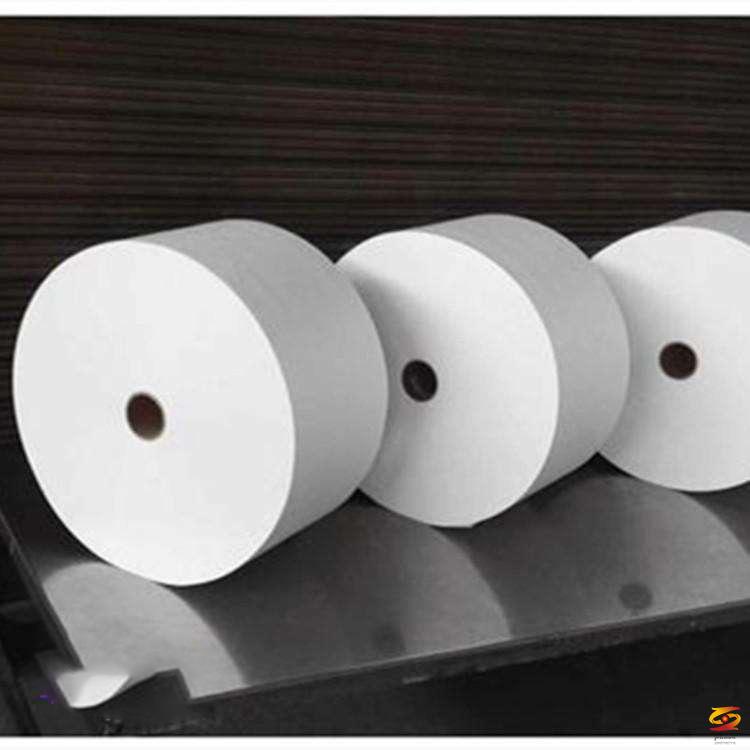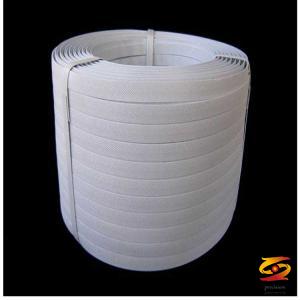THE HISTORY OF MELTBLOWN CLOTH TECHNOLOGY
At present, the melt-blown die head structures designed by ExxonMobil and Biax represent two typical technology types in the world. ExxonMobil's combined meltblown die head consists of a nose tip with a row of spinnerets and a groove angle of 30 ~ 90 ° and two air locks.The two air locks are distributed on both sides of the die tip; Biax The company's combined meltblown die head is composed of multiple rows of spinning nozzles and concentric air holes. This feature is said to provide higher production capacity and better product quality. In recent years, due to the emergence of new deep processing methods such as compounding, lamination, coating, electret polarization and chemical treatment, the variety and application of melt-blown nonwoven fabrics have greatly developed.China's research on meltblown technology began in the late 1950s. In the 1980s, China Textile University developed an intermittent melt-blown nonwoven production line. In the early 1990s, nearly 100 sets of melt-blown equipment designed by the Beijing Institute of Chemical Technology, China Textile University, and Beijing Chaolun Company were put into production in China. Subsequently, companies such as Anhui Aohong, Jiangyin Jinfeng, Tianjin TEDA, and Shandong Junfu successively put into operation five imported continuous melt-blown production lines, which brought China's melt-blown nonwoven production technology to a new level.
There are two types of melt-blown nonwovens in China: continuous and intermittent. In 2006, there were 20 and 30 production lines for continuous melt-blown nonwoven products in China, 4 more enterprises and 6 production lines than in 2005. Intermittent meltblown equipment also has certain developments. In 2006, the total production capacity of melt-blown non-woven fabrics was 331,000 t / a, and the output was 21.600, t increased by 13.2% compared with 19,000 tons in 2005. The proportion is 1.5%.
The source of the new continuous production line in 2006 is that the imported melt-blown die head is used, and the other parts are assembled and assembled by the enterprise themselves.For example, the third production line of Tianjin TEDA, Dalian Ruiguang and Shandong Junfu are the same. , They are all imported from Japan Kazen (Kazen) company to match their own die. In addition, in 2006, the domestic manufacturing level of the continuous melt-blown non-woven production line has been greatly improved. The two melt-blown production lines of 2.4 m single die head and 1.6 m wide double die head manufactured by Beijing Hongda Best It has been successfully started in Zhejiang Tongxiang Jianmin Filter Material Company, and 90% of the manufactured products are exported, which has achieved good economic benefits.
Shanghai Jiarong, Jiangsu Tengda and Hangzhou Zhongnan are an enterprise consortium. In 2006, the consortium produced a total of more than 3,800 meltblown products, ranking first in China. They have a total of 130 ~ 140 intermittent meltblown equipment. Among them, part of the equipment is divided into multiple groups, and each group is equipped with a continuous reciprocating roll mechanism, so that the product can adapt to diverse requirements and can increase labor productivity. This institution has independent intellectual property rights and has obtained patents. The main products of this enterprise are battery separators, filter cores, and linoleum.
In addition to Jiarong, Tengda, and Central-South, intermittent meltblown equipment is estimated to have 100-200 units scattered in Jiangsu, Zhejiang, Shandong, Hebei, and Guangdong. Due to their relatively scattered nature, detailed statistics are not available.
With the maturity of various non-woven fabric processing technologies, the mutual penetration of various processes, the development of hybridization and compounding is the current development trend of non-woven fabrics, especially the compounding of various processes is more and more popular. Value. Since the beginning of the 21st century, the international melt-blown nonwoven technology has developed by leaps and bounds, mainly including the following aspects.
Currently, there are companies such as Hills and Nordson that provide two-component meltblown technology in the world. Hills also has multicomponent meltblown technology. It is understood that the key to its technology is to change the method of using the hanger type to dispense the melt in the past and use the new thin-plate type distribution plate.It adopts a multi-path slot design to accurately distribute different polymer flows, and divide different polymers through different pipes as required. Send to each spinneret. When two-component melt-blown fibers are spun, the melting temperatures of the two polymers are quite different. In the spinning process, the degradation temperature of the polymer with a smaller amount is about 30 ℃ lower than that of the polymer with a large amount. Therefore, it was difficult for different polymers to spin together in the past. The thin plate technology developed by Hills and its spinning box are fully competent. It uses a multi-pump system, and the two components are heated and isolated from each other to ensure that the temperature can meet the process requirements.
In the past, the development of meltblown fibers was based on Exxon's patented technology. In recent years, many international companies have broken through Exxon technology to develop finer nanofibers.
Compared with other fibers, nano-meltblown fibers have a finer diameter and a larger surface area. When the nano-meltblown fiber is used as the filtering medium, the filtering efficiency can be significantly improved. At the same time, due to the fineness of the fiber in the nano-scale melt-blown nonwoven fabric, a lighter weight melt-blown cloth can be used in combination with the spunbond fabric, which can still withstand the pressure of the same water head, and the SMS products can be reduced The proportion of meltblown fibers.
Hills has done a lot of research on nano-meltblown fibers and it is said to have reached the stage of industrialization. Other companies such as Nonwoven Technologies (NTI) have also developed processes and technologies that can produce nanomelt blown fibers, and have obtained patents.
For spinning nanofibers, NTI uses a spinneret hole that is much thinner than ordinary melt-blown equipment. The spinneret hole is said to be as small as 63.5 μm, and the spinneret of the module structure can be combined into a total width of 3m The diameter of the melt-blown fiber spun in this way is about 500nm, and the diameter of the thinnest single fiber can be as small as 200nm.
Improving meltblown equipment, improving product performance and production efficiency, and developing new types of meltblown are the only way for the development of meltblown technology. Some meltblown equipment and spinning boxes provided by Nordson and other companies can be rotated through a certain angle as needed, and are not arranged perpendicular to the production line, so that the width can be changed more conveniently. The continuous meltblown equipment of Accurate (now acquired by Reifenhauser) in the United States can produce filter elements, and can automatically change the relative speed to form a density gradient between the inner and outer layers to increase the filtration efficiency.
At the same time, abandoning the traditional melt-blown raw materials PP, PET, etc., looking for new raw materials, spinning multi-functional, high value-added melt-blown products, is also the development direction of melt-blown technology. The polyphenylene sulfide resin that can be used for melt-blown non-woven fabrics introduced by Celanese AG of the United States can be processed into non-woven fabrics on the standard melt-blown equipment screw that usually uses polypropylene raw materials. The melt temperature of the melt needs to be 300 ~ 320 ℃, and the temperature needs to be increased during spinning. The fineness of melt-blown fibers spun with this resin occupies a certain proportion between 2 and 4 μm, with a wide distribution from fine to coarse. Because of its high temperature resistance, it can be used for filtration in harsh environments such as cement plants and steel plants, and has great development prospects.
In addition, biodegradable melt-blown filter media spun from polylactic acid (PLA), polyamide ester (PEA) and other resins will also have broad development prospects







